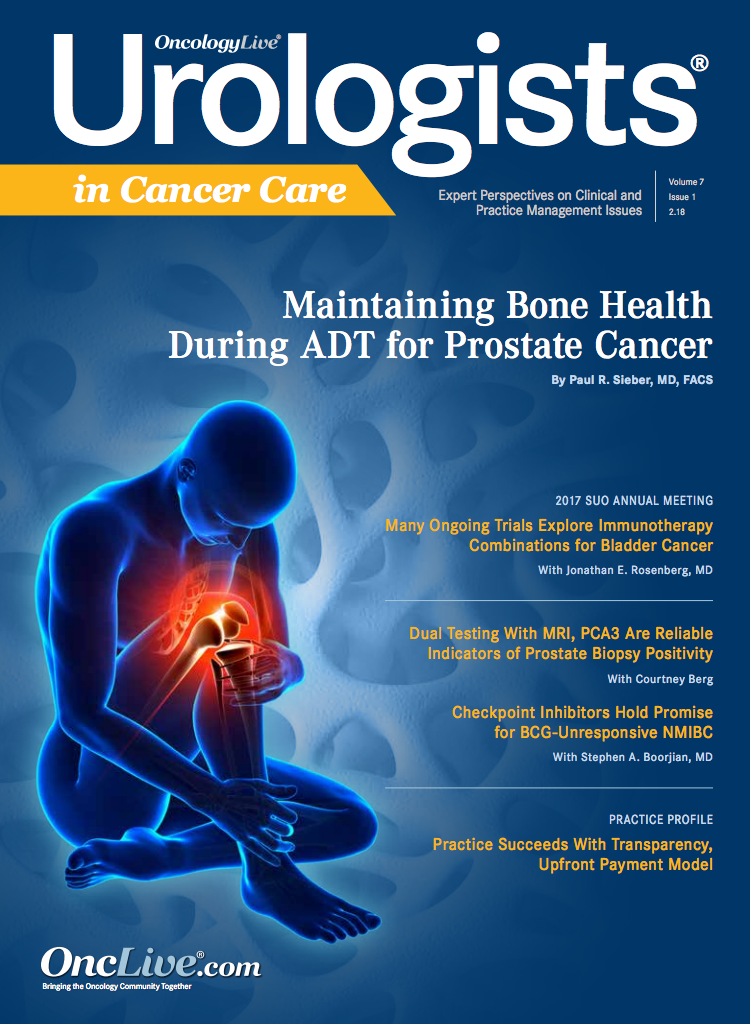Publication
Article
Oncology Live Urologists in Cancer Care®
A Call to Arms in Urology
Author(s):
Prostate cancer continues to be the most common newly diagnosed solid tumor in men over 50 years and the second leading cause of cancerspecific mortality.
Raoul S. Concepcion, MD, FACS
I hope that many of you took notice of the recent estimates for 2018 by the American Cancer Society in the latest Cancer Facts & Figures 2018. At first glance, the trends really have not changed: Prostate cancer continues to be the most common newly diagnosed solid tumor in men over 50 years and the second leading cause of cancerspecific mortality.
The good news is that the number of new cases is relatively stable, with just over 160,000 estimated for this year. The sobering statistic, however, is that the number of deaths projected for patients with prostate cancer for the year has risen (164,690 for 2018 vs 161,360 in 2017). The decrease in the number of new cases over the past 5 years, and this 2% rise in prostate cancer mortality, is no doubt directly related to the ill-fated “D” recommendation attributed to prostate-specific antigen (PSA)—based screening. This decision was handed down by the United States Preventive Services Task Force (USPSTF) in 2012 despite unified protests from our major organizations, including the American Urological Association, the Large Urology Group Practice Association, the American Association of Clinical Urologists, and the Society of Urologic Oncology. Combined with the rising incidence of metastatic disease in men between ages 55 and 69, the urology world needs to stand up and take notice.
Many years ago, a colleague and I debated about the role we, as urologists, play when a patient is referred to us from a primary care physician with a singular elevation of their PSA value. His practice and logic was to biopsy all these patients because if he did not, the patient would just go someplace else to get the biopsy performed. This was probably a not-too-uncommon practice of many urologists in the community dating 10 to 20 years. However, our understanding of the limitations of PSA, prostate cancer heterogeneity, and the availability of adjunctive testing— both genetic assays and imaging based—truly puts us in the best position to manage these patients who have been referred for our expertise and knowledge base, not just our technical skills.
As we have articulated many times in this publication, it is incumbent on us as specialists to be the recognized leaders and experts in the diagnosis and management of prostate cancer and not cede that mantle to any of our colleagues. So, what are the areas that require our complete and thorough understanding so that we can better serve our patients, especially in this world of value-based medicine:
- Which patients need an initial biopsy to diagnose significant prostate cancer, and what tests are available to aid in that decision?
- Which patients with an initial negative biopsy require a repeat biopsy?
- When is active treatment/intervention needed versus active surveillance for localized prostate cancer?
- In the setting of a patient definitively treated but who has a biochemical recurrence, when is it appropriate to start androgen deprivation therapy (ADT)?
- Early identification of metastatic disease in the patient with castration-resistant prostate cancer (CRPC).
- Understanding of the various therapeutic options for patients with hormone-naïve and metastatic CRPC, as well as the adverse effect profiles of these agents, including ADT.
- Understanding the role of molecular and hereditary testing for patient management and family counseling.
- Understanding the utilization of new imaging technology.
As we are well aware, the rapid proliferation of new data in all of these areas can be quite daunting and can make it difficult to stay current, especially for individual practitioners or even those with well-established large group practices where there is an element of sub-specialization to some degree. That is no excuse for us to not take the opportunity to go out and educate our referring doctors and the public on how the urology community manages these complex issues. If we fail in these endeavors, we will become nothing more than dancing monkeys, relegated to perform when instructed to do so by our referring physicians who will view us as nothing more than noncognitive proceduralists. We cannot allow that to happen, given our responsibilities to our patients and the training of our future urologists.
American Cancer Society. Cancer facts and figures 2018. ACS website. cancer.org/ research/cancer-facts-statistics/all-cancer-facts-figures/cancer-facts-figures-2018.html. Published 2018. Accessed January 12, 2018.










